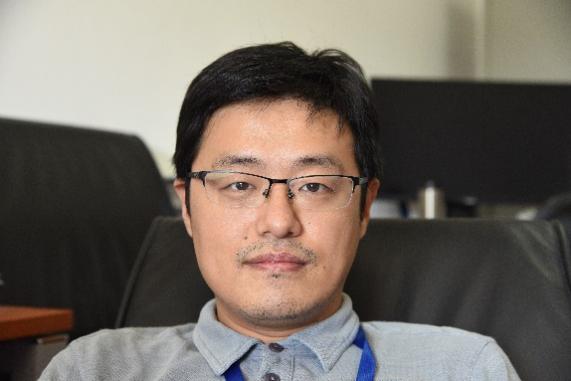Jiong Yang1, Quan Qian2, Wenfeng Shen2, Wenhao Zhu2, and Wenqing Zhang1,3*
1 Materials Genome Institute, Shanghai University2 School of Computer Engineering and Science, Shanghai University
3 Department of Physics, Southern University of Science and Technology
Abstract: The material genomics has changed the style of material innovation in recent years. There have been several repositories available based on ab initio calculations, accelerating the process of finding new materials in many material fields. The MGI research in China has a late start, and it is urgent to increase the academic level along the direction. In this talk, we focus on the multi-scale integrated computing and the independent development of the modules.
Materials cover problems in multi-scale regions, from microscopic atoms and electrons to macroscopic systems and applications. Current high-throughput repositories are based on ab initio calculations, incapable of meeting the multi-scale requirements. In this project, multi-scale computing modules are developed, ranging from microscopic ab initio calculations, molecular dynamics, to mesoscale and macroscopic scale. In ab initio part, there are modules dealing with the electron and ion transports, as well as a module for computing the electronic structures of ultra large systems. The molecular dynamics module bridges the problems between microscopic and mesoscopic scale. We also have the phase field module for mesoscale range, continuum module for macroscale, and a module for predicting the service life of lithium ion battery. All the modules are embedded in a same platform (http://matdata.shu.edu.cn). A uniform platform for the modules make it possible to transfer data between modules by using a public data pool, which has been realized between ab initio modules and continuum module.
In ab initio high-throughput calculations, self-developed algorithms are used to realize unique functions. Up to now, we have more than 80,000 entries for structural information and an automated workflow for ab initio calculations. Band structures for near 30,000 entries are available now, which is convenient for a deep search based on electronic structures. For electrical transport, the advanced constant electron-phonon coupling approximation is developed for accurate prediction of the electrical transport properties in thermoelectric materials. For elastic modulus, an adaptive algorithm is under development.
Keywords: Multi-scale integrated platform; Public data pool; ab initio; Computing modules
跨尺度高通量集成计算平台与计算模块自主开发
杨炯1,钱权2,沈文枫2,朱文浩2,张文清1,3*
1.上海大学,材料基因组工程研究院;2.上海大学,计算机学院;3.南方科技大学,物理系
摘要:近年来,材料基因方法正在引领材料领域研发方式的变革。国际上许多平台都已经在第一性原理数据库方面做了相当的积累,并且加速了很多材料领域的新体系研发进度。国外平台在分享数据的同时还开放了平台的应用程序接口,进一步培养了用户对于国外数据的使用黏性。国内的材料基因研究起步较晚,虽然已有一些开放的数据库,但如何快速提升我国材料基因领域的学术地位,形成自己的特色,依然是一个亟待解决的问题。本报告从跨尺度集成计算与计算模块的自主研发两方面阐明本项目的进展。
材料的问题本质都是多尺度的,从微观的原子电子直到宏观应用层面。目前的高通量计算平台主要基于第一性原理计算,无法满足实际应用跨越多个尺度的研发需求。本项目开发了跨越多个模拟尺度的集成计算软件平台,从微观的第一性原理、分子动力学到介观、宏观尺度。第一性原理包含电子、离子输运和超大体系电子结构计算模块,分子动力学方面有衔接微观和介观的模块,在介观尺度上有相场模拟模块,在宏观尺度上有连续介质尺度模块,另外还有锂电池服役寿命预测模块等。所有这些模块以及相应尺度的计算都集成于统一的平台(http://matdata.shu.edu.cn)。模块间可以通过集成计算平台的公共数据池进行跨尺度数据传递,已在第一性原理与连续介质模拟之间实现了数据传递。
在第一性原理高通量计算方面,坚持计算模块的自主开发,形成差异化的功能与数据。第一性原理方面有80000余条结构数据,结合具有自主知识产权的自动计算工作流,可实现一键式任务提交与展示。目前该平台已具有近30000条电子结构,可大范围地进行基于电子结构的材料筛选。在电输运模块中,开发了国际领先的常数电声耦合近似算法,可用于准确的热电材料电输运性能理论预测。在弹性常数模块中,正在开发具有自适应形变量的弹性常数算法,将有效地提升模量性质的计算精度。
关键词:跨尺度集成计算平台;公共数据池;第一性原理;计算模块

博士,毕业于中国科学院上海硅酸盐研究所,现为上海大学材料基因组工程研究院教授。主要从事以第一性原理计算及电热输运理论为基础的理论工作。具体研究内容涉及高通量计算平台搭建与算法发展,高性能热电材料设计,以及微观电子-声子及其耦合作用的理论探索。
Email:jiongy@t.shu.edu.cn